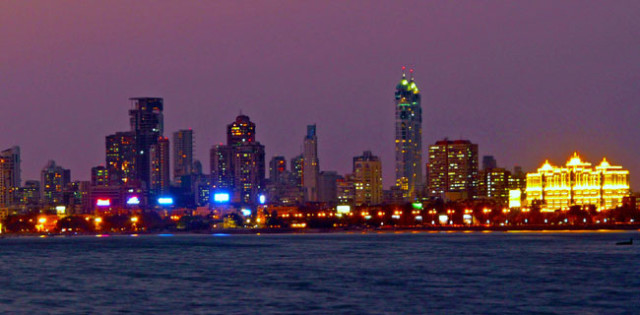If you grew up during the nineties, it’s a fair bet that one of the movies you watched several times (apart from, embarrassingly, Hum Aapke Hain Kaun), was Titanic. And if you saw it, you remember the lines at the beginning, uttered by a 102-year old survivor of that shipwreck, which seemed to define not just the ship, but the whole movie experience:
Titanic was called the Ship of Dreams, and it was. It really was.
Mumbai might lie a few kilometres off the Konkan coast – it is an island, after all, but it is not a ship. Nonetheless, it has a couple of commonalities with the ship that sank on April 14, 1912. For one thing, it’s called the ‘City of dreams’, and for another, it is also considered to be ‘unsinkable’.

For a young migrant in his first week in the city, it is more than likely that the ‘City of dreams’ tag will feel like a cruel irony. The city is either blazing hot or dripping wet (depending on what time of year you arrive), and either way you will be drenched (in sweat or rain-water). People are cheerfully unconcerned about anyone other than themselves, the bus service is an arcane system of unfathomable routes and funny names, and everything appears to be more expensive than it’s worth. High-rise buildings grow like tall trees, surrounded by the weed-like slums, chawls and factories. Old mills scatter the landscape, a legacy of the city’s cotton-trade past, most in a state of extreme dilapidation. The street-dwellers are ubiquitous, little canvas sheets draped around dividers, barriers and bus-stops forming homes in which generations of a certain class of migrants live.
But as time passes, the city grows on you. Well, to be honest, it ‘grows on you’ like a painful skin infection, but it grows nonetheless. Mumbai is a commercial city, and commerce drives it. There’s little space or time here for culture, but then there’s also little space or time for prejudice. Showing-off in fancy clothes is fine when you’re travelling in expansive Mercedes cars, but when most of the city travels in trains that resemble tightly-packed cans of rosogullas, only much less sweet-smelling, it’s a relief to reach your office with your clothes still on your back.
As for those fancy cars, the roads have so much traffic that the only car a person should contemplate buying in Mumbai is a handcart, so it’s unlikely your worth will be measured by that either. Not that this implies the city does not have it’s scope for showing off – step into one of those dilapidated mills I mentioned earlier and you’ll find it converted into a snazzy nightclub, with the young and beautiful – and rich – of the city draping themselves elegantly over the parapets in couture gowns and branded denims, cigarettes and vodka-shots in hand.
But for the most part, what you will be measured by is your work ethic. It is a city that runs by the clock. Train timings, bus timings, meetings, appointments. The distance between two points in Mumbai is never measured in miles or kilometres in Mumbai, unlike in Delhi or elsewhere. Here, it is by the clock. Dadar to Andheri? Forty-five minutes. Fort to Chembur? Twenty-five minutes…and so on.
Do you know how to get produce from Vashi to Borivali in the shortest possible time? Can you make it to a sales call in Vakola at 3 p.m and double back to your office in Fort by 5:30? On such questions can careers be made.
And as time goes by, you realise that in this city it isn’t just dilapidated mills that re-invent themselves as snazzy nightclubs. It’s also a city where a weed can grow into a tree, and a young man or woman who makes the right choices and puts in the hard work can go from pushing a handcart to owning a Mercedes.
That, ultimately, is why Mumbai truly is the City of Dreams.
Because this is where the area you live or who your parents were, is less important than how many hours of work you put in.
Because this is the city where, when it rains like it is judgement day, the rich housewives step down from their towers and distribute biscuits and water to those caught in the flooding.
Because this is the city which survived riots, bomb blasts, terrorist attacks and floods, to go back to work the next day – maybe because it had to, maybe because work defined the city more than hatred or fear.
Because whenever it has seemed like it might sink, unlike the Titanic, which made rather a point of saving the First Class passengers and leaving those in the third class to fend for themselves, the people of Mumbai have always stood shoulder to shoulder and tried to save each and every one of their fellow-citizens.
And perhaps, when you are old and grey, sitting on a porch in the city, or maybe even in your home town, or a country far away, you’ll lean back and remember when you first came to Mumbai, and say:
My Mumbai was called the City of Dreams. And it was, it really was.
Image Courtesy : Wikipedia






























